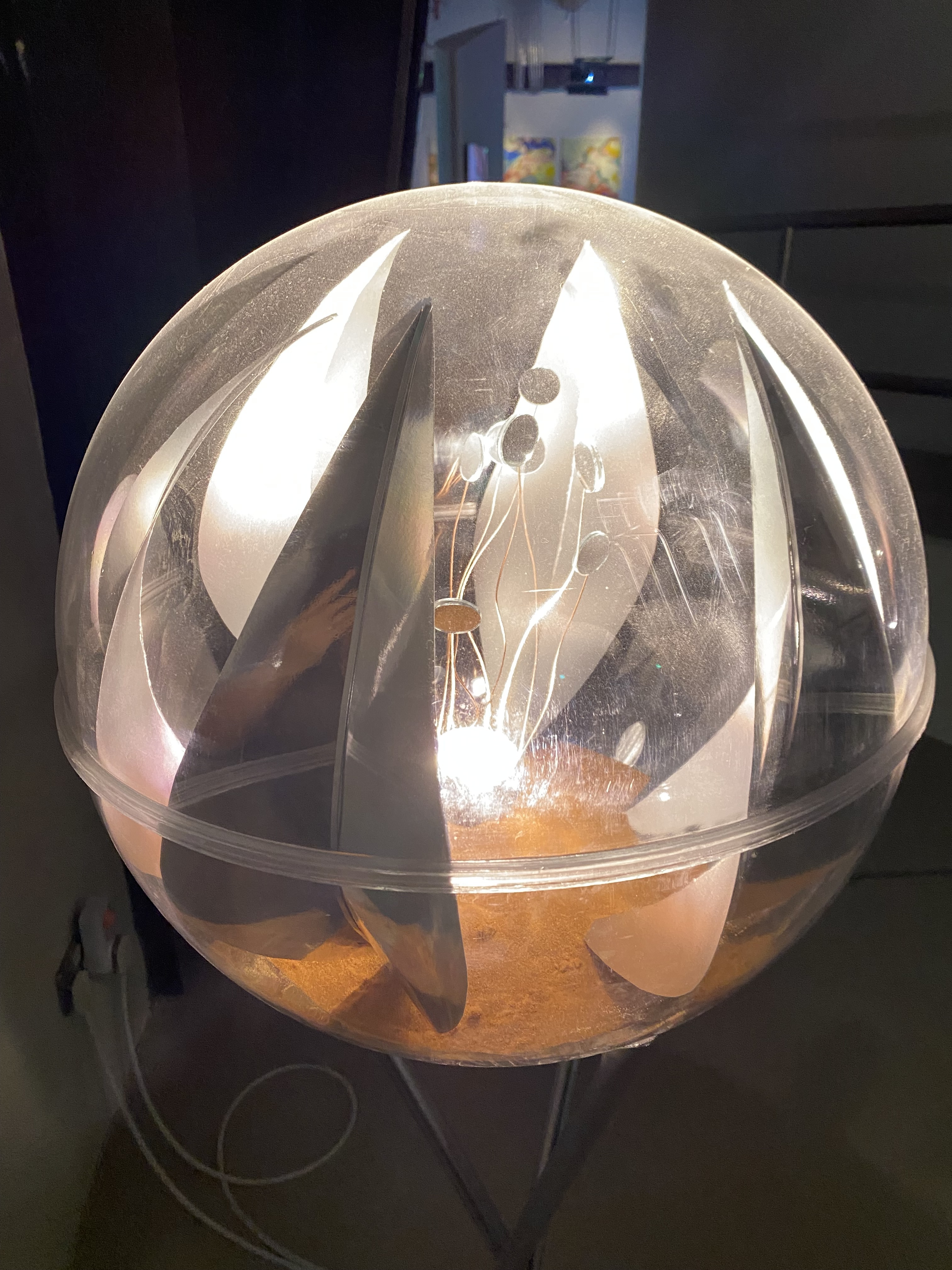Last I read, which was years ago, was they still struggle under -20C. Which is not abnormal for many places in Canada. How do these perform in wicked cold times?
Central heat pumps have built in electric heat in cases the heat pump alone isnt sufficient.
Even if the heat pump isnt enough all the time, its still better than heating with oil, electricity, gas, etc. exclusively.
It isnt an all or nothing situation.
That, and some heat pumps are better than others. The ones that use geothermal (lines run underground below the frost line) are more expensive but don’t have much issue with the cold.
Last conversation I had on Reddit years ago a guy in Ottawa had data that showed that he was drawing heat during near -40C.
they still struggle under -20C. Which is not abnormal for many places in Canada
Yes, but that’s why heat pumps in this country are typically paired with auxiliary electric heat. The heat pumps still contributes some amount, even at -30 or below, but the electric “tops up” the pre-warmed air that the heat pump makes.
And that is only really needed for a couple of months out of the year, even in places like Winnipeg or Edmonton.
20-30 years ago, the heat pump technology wasn’t as capable, and couldn’t do the job as well, but they have improves quite a lot since then.
Yes, but that’s why heat pumps in this country are typically paired with auxiliary electric heat.
Yes, and although it’s not very efficient to have auxiliary electrical heat, that’s a small percent of the overall year.
If you live in a home that hits -20C for 20 days per year, that’s really cold! But you’ll probably need the heater on for about 180 days per year at that point. Putting up with less efficiency for 20-30 days per year is still a net gain if the other 150 days of heating makes up for it.
I mean, a resistive electric heater is still (“just”) 100% efficient.
Yeah but if some direct combustion of a fossil fuel is cheaper than electricity, then the actual dollars per unit heat will be cheaper with a fossil fuel source.
True.
Cheaper, but less efficient. Fossil fuels have a efficiency < 1.
Question is, what’s more important for you: money or environment…
This is not the whole story because not every heating day is equally cold. I have a high end cold climate heat pump in Colorado (which works great btw). I use about 1/3 of my total annual heating energy in January, despite heating for >6 months of the year. I’ll use 10% of my annual energy budget for a long weekend if its -10F, and that’s all heat pump (I don’t even have backup strip heat). It would be 20% if i was using electric resistnace for those 4 days. Electric resistance is really not great, so folks really should get the best heat pumps they can that cover the coldest normal days. It’s fine to install strips as a true backup but you’re going to have some very high bills and high carbon if you’re using it 20-30 days/year. If its hydro/nuclear power you’ll still come ahead on carbon but that’s not the case everywhere.
but the electric “tops up” the pre-warmed air that the heat pump makes.
Is the heater at the hot end? The reason they crap out is that they can no longer move and vapourise their coolant, so I’d expect it to be somewhere else, probably the cold end.
The ones I’ve seen, the aux heat is in the duct airflow after the hear exchanger.
Hmm. Weird. I’d guess, then, that someone after the original manufacturer is adding that.
Some heat pump models can work at -30C
See here how Norway is doing it: https://www.theguardian.com/environment/2023/nov/23/norway-heat-pumps-cold-heating
Many are designed for extreme temperatures now, but they are not efficient in such temperatures due to the properties of the refrigerants available. It will usually still run, but will run longer than usual and may not be able to keep up with heat demand. During a cold snap, might run continuously and may need frequent defrost cycles which further reduces efficiency and heating capacity. How cold they can/should go depends on things like sizing, refrigerant, building insulation, solar heat gain, and other factors. In a country like Canada, air source heat pumps will always be installed with a backup heat source. In Canada, that is most commonly the same natural gas furnace that the house was always originally equipped with, while the heat pump replaces the air conditioning unit, but backup heat can also be resistive electric, heating oil, wood, and more, and a decent thermostat will have an outdoor air sensor that can detect an appropriate outdoor conditions at which to switch from heat pump to backup/“emergency” heat when needed, and then back to heat pump when conditions permit.
In my experience, my heat pump provides about 90% of my heating from fall to spring. Only a few severe cold snaps put the heat pump on the bench for a few days switching over to emergency heat completely, and most of the winter it runs frequently to continuously to maintain consistent temperatures and only needs a short and occasional boost from the furnace. The gas backup is also nice peace of mind in case of a prolonged power outage due to a potential ice storm, as the furnace blower and electronic controls can easily be run off a small battery pack or generator for a very long time.
unless I am very much mistaken this is only true for air source heat pumps. If you’re in a cold environment I would expect you’d want a ground source heat pump instead, although the installation cost for that will be significantly higher than air source.
Norway has worked it out. I am sure Canada can. Ground source is one option, or a second heater for the few very cold days.
Mine is rated for -25, which where i live in southern Ontario has been reached 3 times in 50 years (wind chill doesn’t count remember). And while I haven’t had a heat pump for one of those days I don’t think it would be a problem, after all the efficiency doesn’t just drop to 0, it just doesn’t work as well for that one day and my house could stay a safe level of warm for a day or 2 without heat anyway.
Despite this I am required to have an auxiliary heat source, so I get charged 30 dollars a month just for a gas hook up I haven’t used.
A lot of heat pumps have normal electrical heating as a backup as well.
Some heat pumps work by running pipes deep underground.
Mine works fine.
I read that completely differently from how it was meant.
They’re pushing out fossil fuel furnaces.
Been a little while since I looked up the utility rates, but last I remember gas is about 1/7 the cost of electricity in Saskatchewan. Makes it hard to justify heat pumps for heating in most places. Hope the technology continues to improve and it’ll be a more sustainable option when we have a more sustainable grid.
Gas furnaces achieve about 96-98% efficiency. Heat pumps achieve 300-400%. So you have to factor that in.
There’s still a cost difference but the hope is for governments to start supporting serious nuclear energy to drive down electric costs. It’ll take time but natural gas will become less economical as decades go on especially with investments.
How does something achieve 300-400% efficiency?
Refrigeration cycle can get crazy efficiencies like that because it is transferring energy from one side of the system (indoor unit) to the other (outdoor unit). The amount of energy that is transfered is greater than the amount of energy required to push the refrigerant through the system.
Its partly due to how you are measuring efficiency. It mainly moves heat rather than creates it.
Another fun way to get more heat is condensing, a dehumidifier gets over 100% efficiency if you were to use it as a heater. Heard of evaporative cooling right? Well condensing is the opposite, you get extra heat from that.
If you take 100 joules of electrical or chemical energy, and then direct them to a heater in a house, it’ll create about 100 joules of heat. That’s 100% efficiency.
But if you use the 100 joules of energy to run a heat pump, it might bring in 300 joules of heat into the house. That’s 300% efficiency, when measured locally at the place you actually care about (inside the house). Zoom out and laws of thermodynamics still make it impossible to create more energy than was put in, but if you look at just the part you care about, it’s possible locally.
Ok yeah, so you would consider it as two systems, one being the heat pump and the other being the rest of the world.
And instead of creating heat you’re moving it, so your heat pump is operating at above 100% efficiency while the rest of the world is not.
Thanks for the explanation!
start supporting serious nuclear energy to drive down electric costs
Eh, I can see a resilience based argument for why we need nuclear, but building new nuclear is never going to be cheaper than solar or wind.
Newly built nuclear would do many things, but it wouldn’t drive prices down.
Wind and solar would do that though.
Yeah, depends where you live. Saskatchewan is the worst place, Quebec is the best.
Yep, doesn’t make economical sense here yet. Better to put money towards air sealing and (the right kind of) insulation.
I’m in Manitoba and am kind of in the same situation. Even though our electricity is really cheap, it’s still more economically efficient to use natural gas. Coupled with just buying a new furnace and air conditioner, I don’t see myself getting one anytime soon. I’d still be happier if we subsidized electric heating/heat pumps (or stopped subsidizing fossil fuels so much) but recognize I’m in a place where I can afford that and many others simply can’t.
If you have AC you already have a heat pump
If you have AC you have 98% of a bidirectional heat pump and likely no way to easily convert it to bidirectional.
Air Conditioning only heat pumps should be taxed extra to entice people to get a real heat pump.
Absolutely agree.
I thought the vast majority installed in the past few decades could do both?
That really depends on where you live. The option wasn’t even mentioned when my furnace was replaced a few years ago, and when I checked my AC model, it was not listed as a heat pump.
I have to pay about $50 USD per month just for the luxury of having heating in the northern US., even during the summer when I don’t need it. R The gas company can fucking blow me, I’m getting natural gas out of my house as quickly as I can afford it.
£100/year was the standing charge just to be connected to the gas network for me, had it removed as the heat pump was going in a few years ago.
Never having to worry about gas or carbon dioxide leaks is nice. Still got water leaks to worry about though, that caused some damage a while back. My standards are low enough that I would have fixed it with some duct tape and plywood but my partner doesn’t consider that an acceptable level of workmanship. But at least we got a really nice shower out of it that the insurance company mostly paid for.
Do Canadian homes use mostly 120 V wiring like the US, or 240 V wiring like the UK?
120 for most applications but 240 for things like stoves, dryers, heat pumps, car chargers, etc.
Residential Outlets are 120V which most household small appliances and lights plug in. Oven ranges, laundry dryers, air conditioning units use 240V. Essentially they have two inverted phases: -120V, +120V to supply 240V across the two ends, usually with a NEMA 14-30 or 14-50 type plug.
I’ve always found this fascinating about Canada and the US. Both legs are +/- 120V potential to ground, and 240V between them. Here in Australia, everything in my house is 230V between active(hot) and neutral, both for plug in appliances and hard wired stuff like my heat pump (We call it a reverse cycle air conditioner here). Almost every house I’ve ever lived in has had one.
My old resistive clothes dryer just plugged into a standard 10A outlet like everything else. My current heat pump dryer uses 1/5 the energy though and has already paid for the extra purchase cost over the past three years.
The difference I would note is that in North America those 240V plugs aren’t likely going to be on a 10A circuit — usually they’re going to be more in the range of 30A to 50A, as they’re typically designated in homes for use by a dryer or a range (and if you’re lucky, in the garage for an EV).
That’s not to say you couldn’t run a lower amperage 240V circuit — there just aren’t a lot of practical uses for doing so (I believe some air conditioners only need 15A 240V circuits, but in my (limited) experience these are usually hard-wired, and aren’t plug-in devices).
We do have 15, 20, and 25A sockets, but these (especially the latter two) are quite uncommon (in the home) and most appliances which require more than 10A are hardwired on dedicated circuits such as for ovens, cooktops and ranges. Our typical clothes dryers just plug in though, with hardwired mainly found in laundromats and other commercial spaces.
Mostly 120V, but some appliances require 240V.
Thermostats typically use 24V for controls which I believe is considered low-voltage wiring.
I wish I knew about heat pumps a few years back when we replaced our A/C and furnace.
But they, at least by the time I have to replace them again, maybe prices will have come down or the tech improved even more on these things 👍
In my case, it was that our local HVAC shop literally only sold one solution. I couldn’t even talk them into a more powerful A/C despite having both a grow op (at the time) and server farm in the basement.
Our A/C struggles to cool the house on room-temperature days, but that’s beside the point. Heat Pumps will really take off when the small time dealers start stocking them.
In my case, it was that our local HVAC shop literally only sold one solution.
In hindsight, I feel like I was taken advantage of. They even replaced my water heater “for free”, but I should have been given the option to buy one outright, as I’m now stuck in a rental plan that costs way more than owning it.
And had a heat pump been offered, I would like likely gone for it.
I’m glad that people are finally starting to realize that it’s a lot more efficient to simply run your air conditioner in reverse. Ten years ago people were ripping them out to replace them with a furnace.
What are they powered by?
Most of Canada’s power is hydroelectric and nuclear. 60% of Canada’s energy production is hydroelectric, and Ontario has three of the largest nuclear power plants in the world.
Given their vastly higher energy efficiency, they still reduce emissions even if running on fossil fuels by a significant amount.
It could still be fossil fuel, but they’re more energy efficient than burning the fossil fuel directly for heat.
deleted by creator












